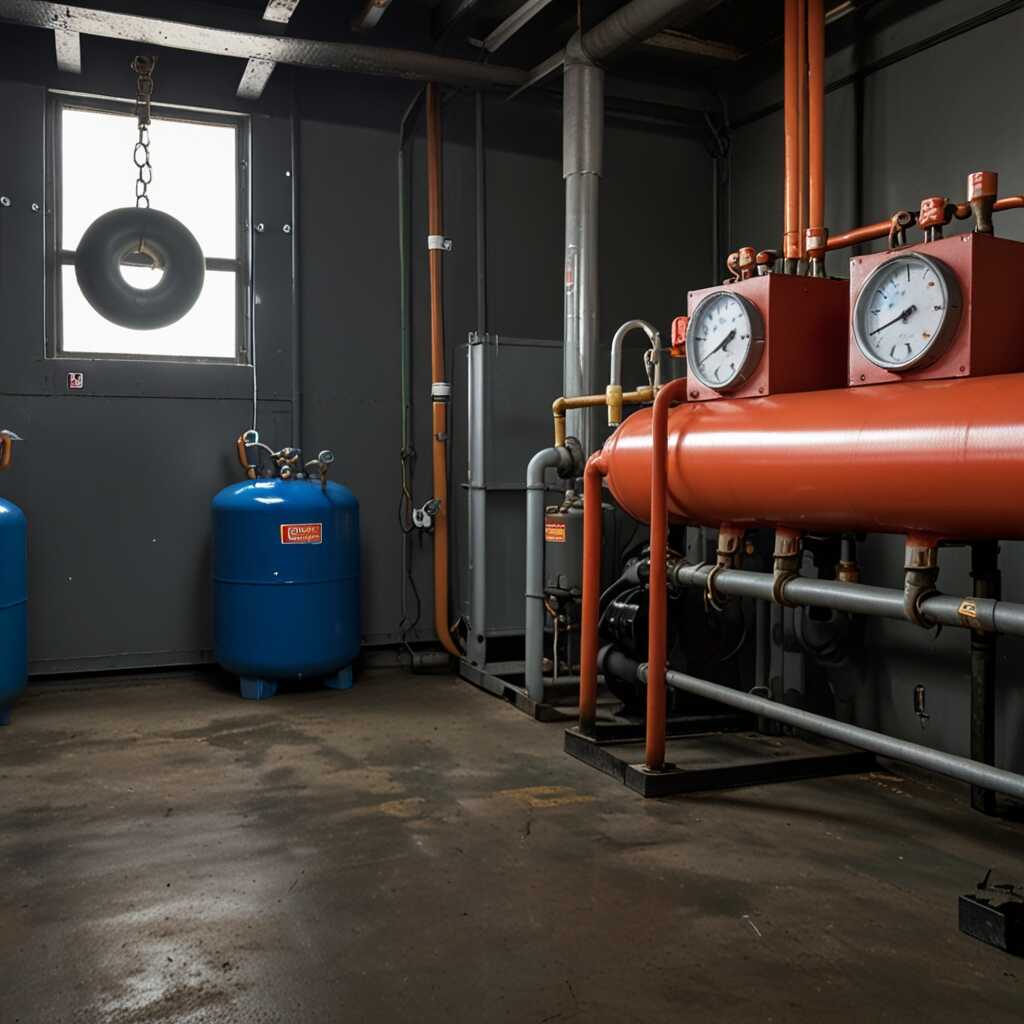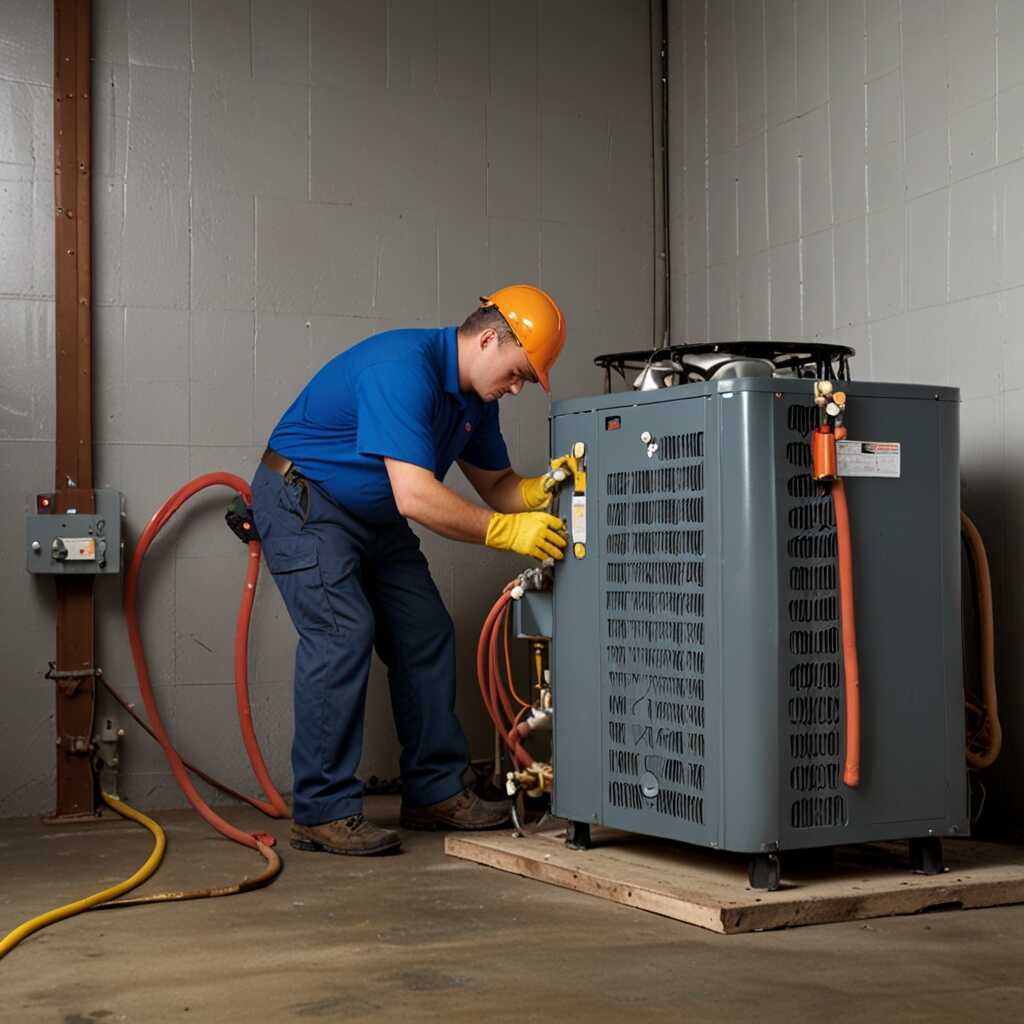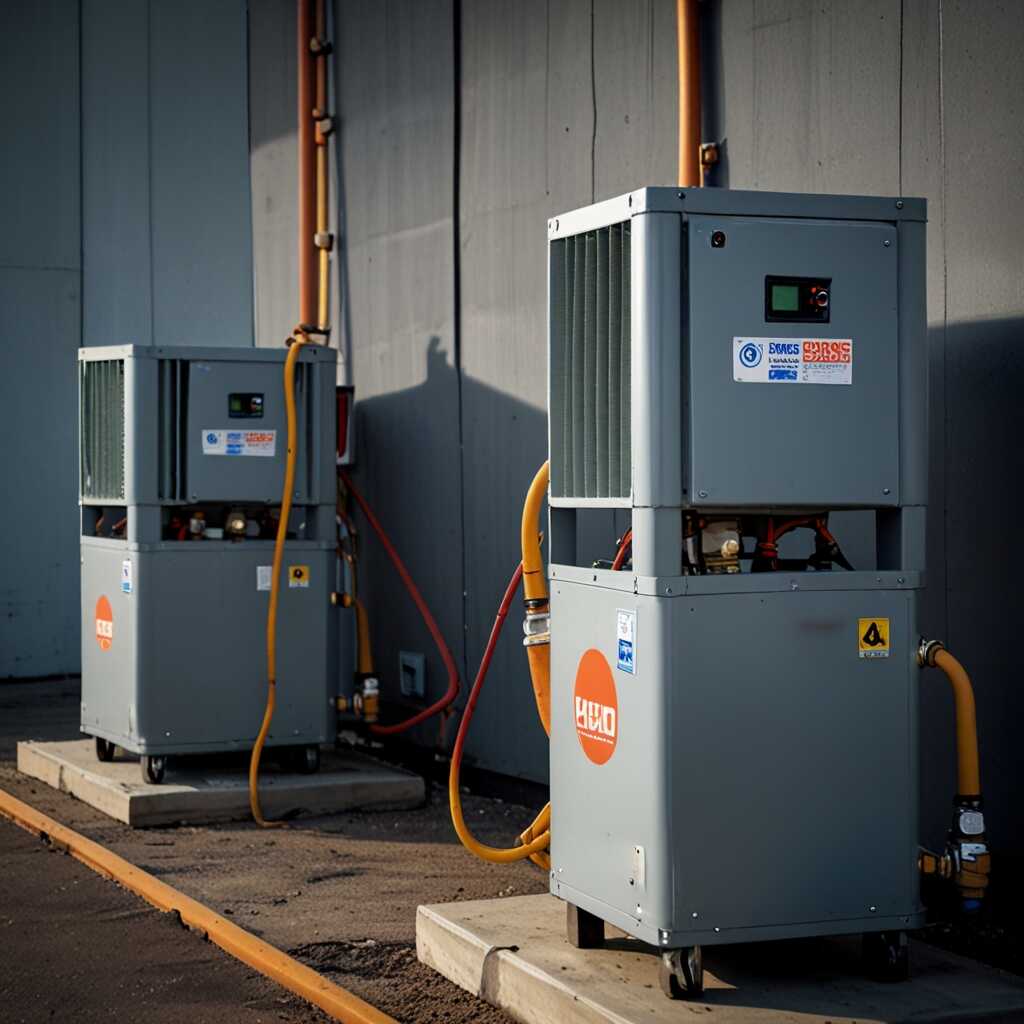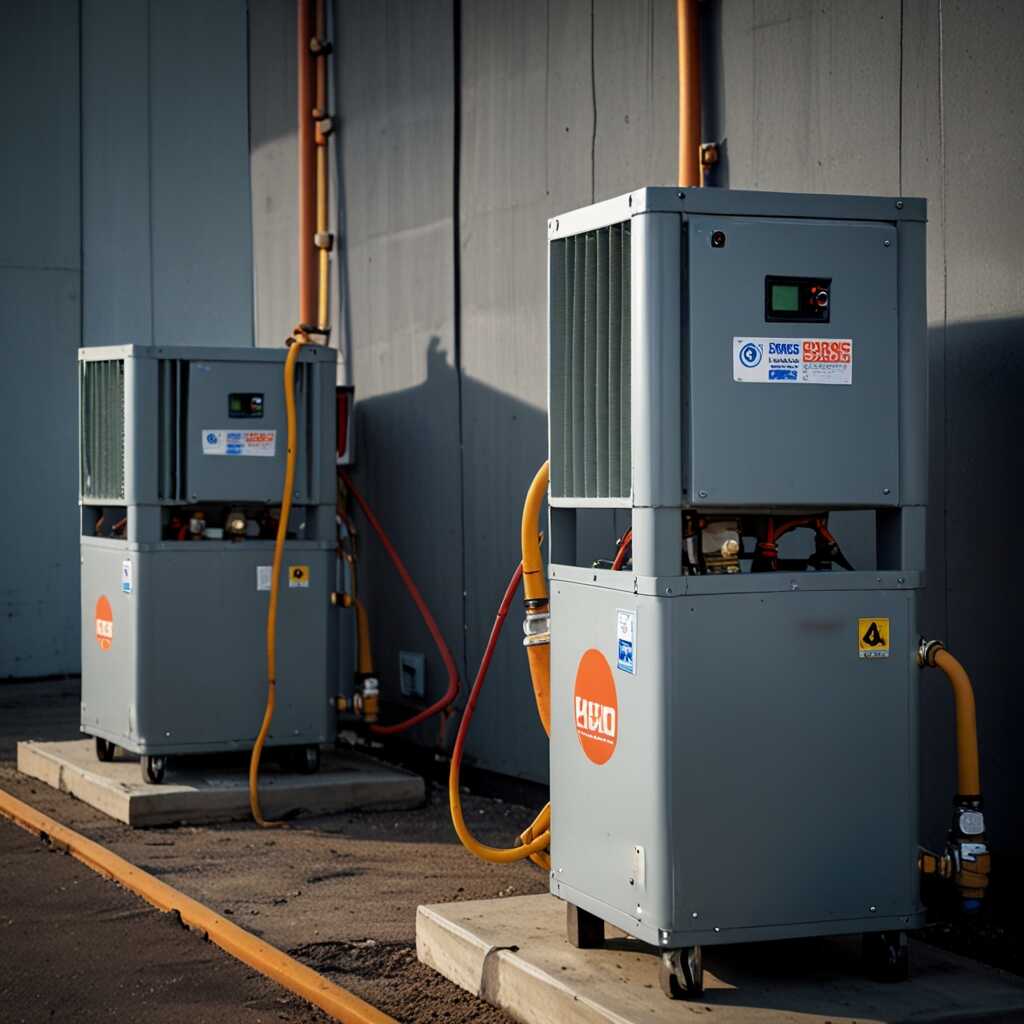Carbon steel tanks provide superior strength for refrigerant recovery machines, ensuring durability and reliability. These tanks can withstand high pressures and resist corrosion, making them ideal for demanding HVAC environments. Refrigerant Recovery Pro emphasizes the benefits of using carbon steel tanks, highlighting their performance in refrigerant recovery applications. This knowledge helps HVAC professionals make informed decisions about equipment choices for optimal operation and compliance.
Why Material Strength Matters in Refrigerant Recovery Machines
Material strength is vital in refrigerant recovery machines. It affects overall reliability and performance. Strong materials ensure that the tanks can handle high pressure. This helps provide safety during refrigerant recovery. Common materials include carbon steel and aluminum. Carbon steel is typically more durable, enhancing the machine’s longevity. These machines undergo rigorous testing to ensure they meet safety standards. Data from reliability studies show that carbon steel tanks outperform aluminum in both durability and ability to withstand high pressures.
Comparing Carbon Steel and Aluminum in Strength and Performance
Carbon steel tanks and aluminum tanks each offer unique strengths in refrigerant recovery machines. Carbon steel is known for its excellent durability, making it capable of handling diverse refrigerants under high pressure better than aluminum. Carbon steel tanks usually last longer under extreme conditions. They are less likely to deform or leak, which is essential for safe refrigerant recovery. On the other hand, aluminum tanks are lighter but may not provide the same level of strength, affecting reliability and safety during operation. Refrigerant Recovery Pro emphasizes that for consistent performance and durability, carbon steel tanks are often the best option for professionals.
Key Benefits of Using Carbon Steel for Tanks
Carbon steel tanks offer several significant advantages for refrigerant recovery machines. First, their high-pressure resistance ensures they can handle the demanding environment of refrigerant recovery. This material excels in longevity and durability, which translates to a longer life span for the equipment. Safety is another critical aspect, as carbon steel provides a reliable barrier against leaks or breaches, especially in harsh environments. When compared to other materials like aluminum or stainless steel, carbon steel tanks often demonstrate superior performance in these areas. Furthermore, carbon steel tanks typically have a pressure capacity that can safely reach up to 600 psi, enhancing their reliability in HVAC applications.
Comparative Analysis of Tank Materials
A comparison of carbon steel tanks with aluminum and stainless steel reveals critical differences in performance. Carbon steel offers impressive high-pressure resistance, making it suitable for heavy-duty refrigerant recovery. Unlike aluminum, which has lower tensile strength, carbon steel tanks can endure more rigorous conditions. Also, when contrasted with stainless steel, which can be more expensive and less optimal in certain scenarios, carbon steel emerges as a cost-effective choice. The durability and safety features of carbon steel tanks ensure they can operate efficiently even in challenging environments, making them a preferred option among HVAC professionals for refrigerant management.

How Carbon Steel Stacks Up Against Other Tank Materials
Carbon steel tanks are renowned for their reliability and durability compared to aluminum and plastic tanks. Carbon steel offers superior strength, allowing it to withstand higher pressure levels. In contrast, aluminum tanks, while lighter, react poorly with different refrigerants and may corrode faster. Plastic tanks are less durable and can crack under stress, compromising their safety and efficiency. Therefore, carbon steel tanks provide an excellent solution for refrigerant recovery by enhancing performance, reliability, and safety.
Comparative Advantages of Carbon Steel in Refrigerant Recovery
Carbon steel tanks excel in durability and strength when compared to aluminum and plastic. They offer better pressure retention, making them suitable for heavy-duty applications. Testing shows that carbon steel tanks can handle pressures over 400 psi, while standard plastic tanks may only manage around 300 psi. The enhanced design of carbon steel tanks ensures they can withstand temperature fluctuations without compromising structural integrity. This quality makes them highly effective in refrigerant recovery, where safety and efficiency are paramount.
Key Metrics on Tank Durability and Performance
- Carbon steel tanks can withstand pressures up to 400 psi.
- Typical lifespan of carbon steel tanks is around 20 years with proper maintenance.
- These tanks can handle temperatures from -40°F to 150°F effectively.
- Over 70% of refrigerant recovery machines use carbon steel tanks.
- Carbon steel has a tensile strength of approximately 70,000 psi.
- Recovery machines can recover up to 99% of refrigerants if used properly.
- Carbon steel will last about 5-10 years longer than aluminum tanks.

Experiences and Insights from HVAC Professionals on Tank Selection
HVAC professionals commonly express high satisfaction with the reliability of carbon steel tanks. Many technicians report that these tanks provide durability that withstands rigorous field conditions. They share instances where carbon steel tanks handled extreme pressures during refrigerant recovery without incident. In terms of applications, carbon steel tanks are frequently chosen for recovery jobs involving R-410A and R-134A refrigerants. The tanks’ robust nature enhances their performance in demanding situations. Performance ratings often see carbon steel tanks scoring between 8 to 10 in efficiency. This demonstrates their superior capabilities compared to alternative materials.
Preferred Features of Carbon Steel Tanks in Refrigerant Recovery
HVAC professionals prefer carbon steel tanks for several essential features. Their design accommodates high-pressure refrigerants effectively. Many technicians appreciate the tank’s sturdy construction, ensuring that it remains leak-proof under pressure. Users also find that the smooth surface of carbon steel improves the tank’s cleaning and maintenance. This results in better refrigerant purity during recovery jobs. Additionally, the ability of carbon steel to handle extreme temperatures is key for various refrigerant types. Overall, these features make carbon steel tanks an excellent choice for reliable performance in refrigerant recovery scenarios.

Navigating Regulatory Requirements for Refrigerant Recovery Equipment
The regulatory environment for refrigerant recovery equipment is governed by various standards aimed at safety and environmental preservation. Key standards include EPA regulations that stipulate safe handling and recovery methods for refrigerants, helping to minimize harmful emissions. Carbon steel tanks are designed to handle high pressures safely, enhancing reliability under demanding conditions. Their robust construction meets or exceeds these regulatory compliance standards. Research shows that machines using carbon steel tanks can deliver superior performance over their lifespan, exceeding industry benchmarks for both durability and safety. This is essential for HVAC professionals committed to regulatory adherence.
Understanding the Importance of Tank Material in Compliance
The choice of material in refrigerant recovery equipment directly affects compliance with regulatory standards. Carbon steel tanks are known for their exceptional durability and ability to withstand rigorous testing conditions. They can handle high-pressure scenarios without compromising safety. In contrast, alternative materials may not offer the same reliability and can lead to compliance issues. By using carbon steel tanks, technicians ensure efficiency and help maintain performance standards that are critical to meeting environmental regulations. Choosing equipment constructed with carbon steel is imperative for HVAC professionals, providing peace of mind and a proven track record in adherence to essential safety standards.
Advantages of Using Sturdy Metal Tanks
- Carbon steel tanks resist physical impacts better than alternatives.
- They provide superior strength for refrigerant storage and recovery.
- These tanks are often more cost-effective over their lifespan.
- Users notice lower maintenance costs with carbon steel than with plastic options.
- Carbon steel is less prone to leaks resulting in environmental compliance benefits.
- These tanks offer excellent fatigue resistance improving overall durability.
- Many HVAC professionals trust carbon steel tanks for long-lasting performance.

Evaluating the Cost Benefits of Durable Equipment Investments
Investing in carbon steel tanks for refrigerant recovery machines can lead to substantial long-term cost savings. A durable construction reduces maintenance expenses since carbon steel withstands wear and tear better than less sturdy materials. This means HVAC professionals spend less on repairs and replacements, enhancing overall reliability. The efficiency of carbon steel tanks ensures these machines operate smoothly, providing consistent performance that reduces operational costs. Studies indicate that facilities can save thousands annually by choosing high-quality materials that offer a proven track record of durability and performance.
Understanding the Economic Impact of Maintenance Costs
The economic impact of maintenance costs is crucial for HVAC professionals. Choosing carbon steel tanks significantly decreases maintenance issues. These tanks require less frequent repairs, allowing technicians to focus on other tasks. Facilities experience fewer downtimes, leading to increased productivity and efficiency. Moreover, the use of durable materials enhances the longevity of the equipment. This results in extended service life, which leads to fewer purchases of new machines over time. Therefore, selecting the right materials is essential for optimizing budget, ensuring that investments pay off through reduced operational costs.
Innovations and Future Directions in Refrigerant Recovery Technology
Recent innovations in refrigerant recovery technology focus on improved materials and equipment designs. Emerging trends include carbon steel tanks, which enhance durability and reliability. These advancements help HVAC professionals select equipment that performs efficiently and meets regulatory standards. Research indicates that carbon steel tanks significantly improve performance in refrigerant recovery machines. The market for this type of equipment is expected to grow steadily, with an estimated increase of over 10% by 2025.
Key Benefits of Material Advancements in Refrigerant Recovery Equipment
Material advancements, particularly in carbon steel production, improve the reliability and efficiency of refrigerant recovery equipment. Carbon steel tanks provide durability that surpasses traditional aluminum options. They can handle high pressures and varying temperatures without compromising performance. This durability leads to fewer maintenance calls and greater user satisfaction. Carbon steel also resists environmental damage, ensuring long-term usability. HVAC professionals appreciate these features as they enhance the overall effectiveness and life span of recovery machines. For expert reviews on specific models, Refrigerant Recovery Pro offers comprehensive comparisons to aid in informed purchasing decisions.
Comparative Insights on Popular Brands and User Groups
- Brand A features lightweight models but may dent easily.
- Brand B offers multiple sizes, accommodating various refrigerant needs.
- Users in commercial HVAC find carbon steel tanks ideal for heavy-duty operations.
- Brand C boasts excellent customer support but is more expensive.
- DIY enthusiasts often choose budget-friendly options with carbon steel tanks.
- Brand D has a reputation for energy efficiency but may have limited stock.
- Facility managers prefer reliable tank systems to ensure compliance and safety.
Summarizing the Importance of Strong Tank Materials
Carbon steel tanks in refrigerant recovery machines offer numerous advantages. They provide enhanced safety features due to their ability to withstand high pressures. Their material durability ensures long-lasting performance compared to tanks made from aluminum or plastic. Carbon steel’s reliability has been proven through extensive testing and real-world operational data. An average lifespan for a carbon steel tank in HVAC applications ranges from 10 to 15 years under normal conditions. This durability helps technicians avoid frequent replacements, saving costs and ensuring continuous operation.
Understanding the Longevity of Carbon Steel Tanks
The longevity of carbon steel tanks stems from their robust construction and resistance to corrosion. They can handle the demanding conditions found in refrigerant recovery applications. Unlike thinner materials, carbon steel is designed to endure fluctuating temperatures and pressures. Regular maintenance, such as inspections and adherence to EPA guidelines, can further maximize their lifespan. Mechanically, these tanks enhance overall operational efficiency, allowing HVAC professionals to perform their work reliably. Investing in carbon steel tanks not only boosts safety but also represents a wise choice for those in the industry seeking long-term solutions.